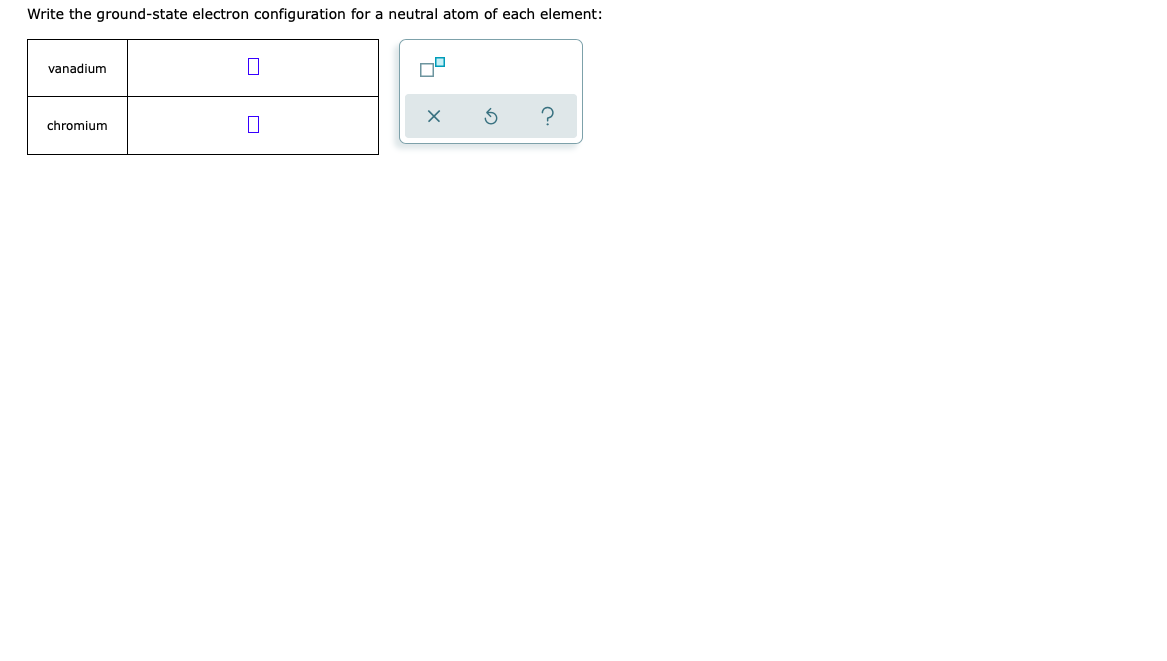

Consequently, the effects on atomic properties are: smaller atomic radius, increased first ionization energy, enhanced electronegativity and more nonmetallic character. Electrons in the outer shells of the atoms of these elements have little shielding effects resulting in an increase in effective nuclear charge due to the addition of protons in the nucleus. The elements of the second and third rows of the Periodic Table show gradual changes in properties across the table from left to right as expected. Properties and Trends in Transition Metals
Chromium electron configuration explanation series#
Similarly, the behavior of actinium means it is part of the actinide series, although its electron configuration makes it the first member of the fourth transition series Because lanthanum behaves very much like the lanthanide elements, it is considered a lanthanide element, even though its electron configuration makes it the first member of the third transition series. The f-block elements are the elements Ce through Lu, which constitute the lanthanide series (or lanthanoid series), and the elements Th through Lr, which constitute the actinide series (or actinoid series). Since 1s can only hold two electrons the next 2 electrons. The inner transition metals are in the two rows below the body of the table. In writing the electron configuration for Chromium the first two electrons will go in the 1s orbital. Explanation: Every single resource I have checked had '4s'1 at the end, after '3d'5. This is because the 4s sublevel has higher energy than the 3d sublevel. The electron configuration of hydrogen is 1s 1, as illustrated. The electron configuration of chromium usually is written with '4s'1 at the end.

Therefore, a hydrogen atom contains 1 electron, which will be placed in the s subshell of the first shell/orbit. Ask your instructor which method he or she prefers.\): The transition metals are located in groups 3–11 of the periodic table. The electron configurations of a few elements are provided with illustrations in this subsection. Using this method, the electron configuration for chromium would be written as #"4s"^1"3d"^5#.Įither way is acceptable, however placing the 3d sublevel before the 4s sublevel is more common. The electron configuration is the distribution of electrons of an atom or molecule (or other physical structure) in atomic or molecular orbitals.

The other school of thought is that the electron configuration of an element should be written so that the sublevels are in order of increasing energy, which will place the #"4s"# sublevel before the #"3d"# sublevel as indicated by the Aufbau diagram. This has the advantage of writing the valence electrons (highest energy s and p sublevels) at the end of the electron configuration. When written this way, all of the sublevels for #"n=3"# are written together in order of sublevels #3# s, p, and d, even though the #"4s"# sublevel fills before the #"3d"# sublevel according to the Aufbau principle. Chromium is naturally found in chromite, rocks, and soil as a combined form. One is like the electron configuration of chromium in your question, in which the #"3d"# sublevel is written before the #"4s"# sublevel. Let us have an eye at the electronic configuration of chromium. That wouldnt be true if the outer electron in potassium was 3d 1. When writing electron configurations using the Aufbau principle, there are two schools of thought. The outer electron governs their properties and that electron is in the same sort of orbital in both of the elements.


 0 kommentar(er)
0 kommentar(er)
